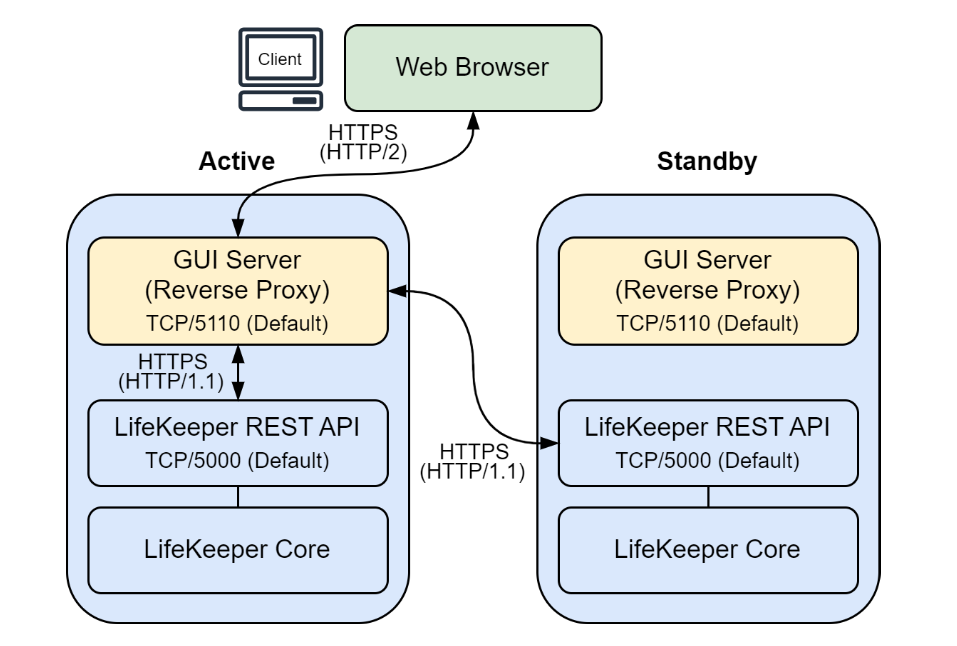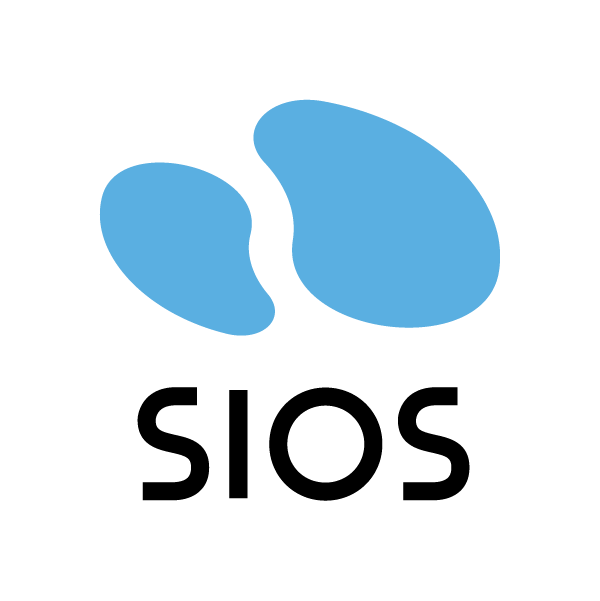
In the LKWMC, the GUI Server and REST API Server components are installed on each node in the LifeKeeper cluster. A user may access the GUI by using a web browser to connect to the appropriate port on any node in the cluster where the GUI server is running. See Connecting to the LKWMC for more details.
When the user performs an operation or requests information via the UI in the web browser, the GUI server communicates with the REST API server on the appropriate node(s) in the cluster to carry out the operation or obtain the requested information.
This architecture eliminates the need to connect to a dedicated GUI client application (e.g., via SSH X11 forwarding or a VNC session) running directly on a LifeKeeper cluster server, as was required when using the original Java-based LifeKeeper GUI client.
GUI Server
The GUI server provides the GUI (Graphical User Interface) portion of the LKWMC web application. It is responsible for performing operations by gathering relevant data from the user and making appropriate API requests to the REST API server processes running on the nodes in the LifeKeeper cluster.
REST API Server
Various RPC and REST API endpoints are exposed which allow for management of the servers and protected resources in a LifeKeeper cluster. When using the LKWMC, the same version of the REST API server must be installed on all of the nodes within the LifeKeeper cluster.



Post your comment on this topic.